Meat turkey breeds mean birds with good size, fast growth rate, and good flesh quality.
If it is not for commercial purposes, you can still wait extra weeks, like me, for slow-growing turkeys with dark, flavorful meat.
I have created a list of 15 best turkey breeds that are excellent for meat based on my raising experience.
1. Broad Breasted White
It is the most popular commercial turkey breed in the United States.
These turkeys possess a sizeable oval body, a broad chest, and strong, wide-set pink legs.
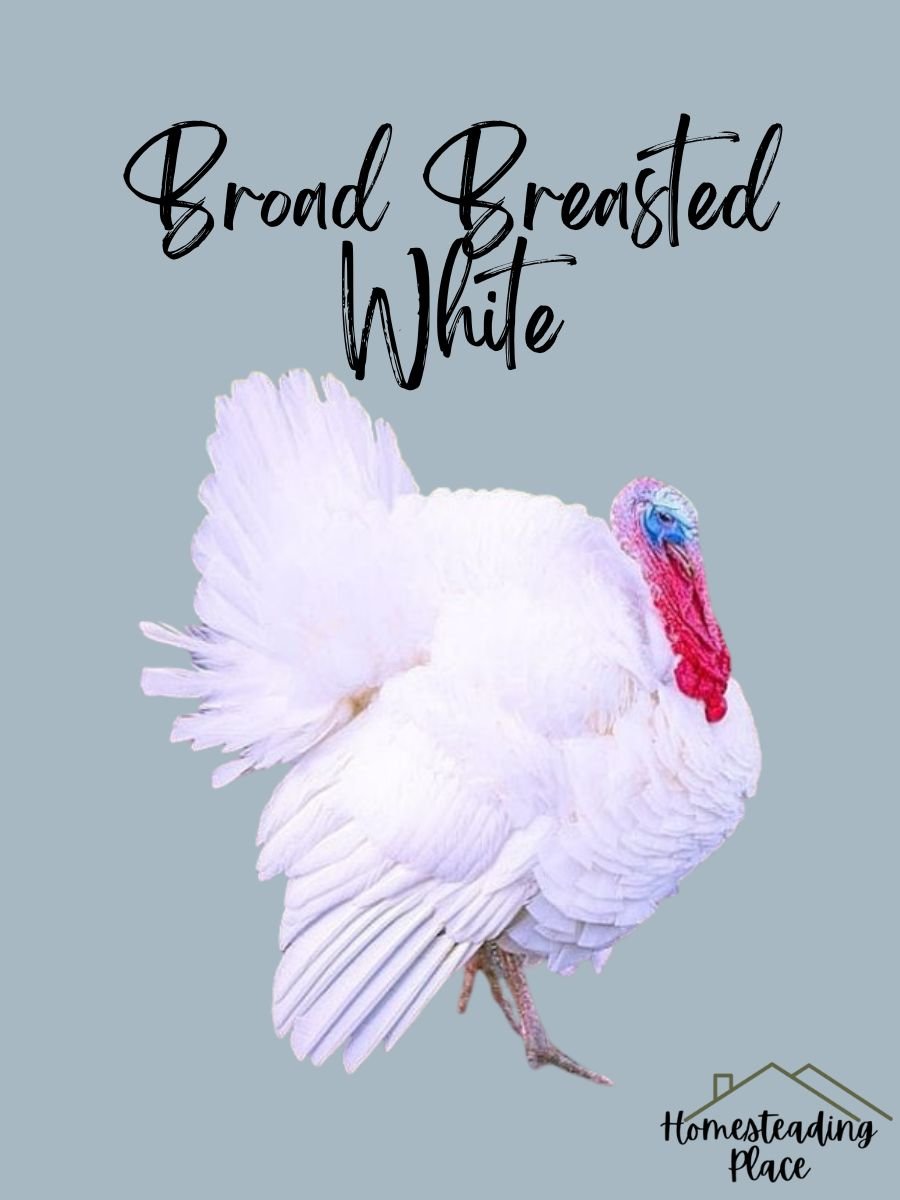
They have shorter breast bones, larger breasts, and a high meat-to-bone ratio. They can weigh anywhere between 22 and 45 pounds.
Broad Breasted White turkeys have rapid growth and become ready to process in 16 to 20 weeks.
Key Characteristics: Large size, rapid growth, tender meat, mild flavor
Pros: High yield, easily available
Cons: Requires artificial insemination with human assistance due to size
Best For: Large-scale meat production
2. Broad Breasted Bronze
This heritage breed looks like a Giant White, growing 4 feet tall, with a 6-foot wing span.
Broad Breasted Bronze turkeys can weigh 20–38 pounds. You can harvest them within 16 to 18 weeks.
Besides, these birds have striking bronze feathers and a metallic sheen. As the light reflect on them, their sheen turn from copper to bronze and burnished gold.
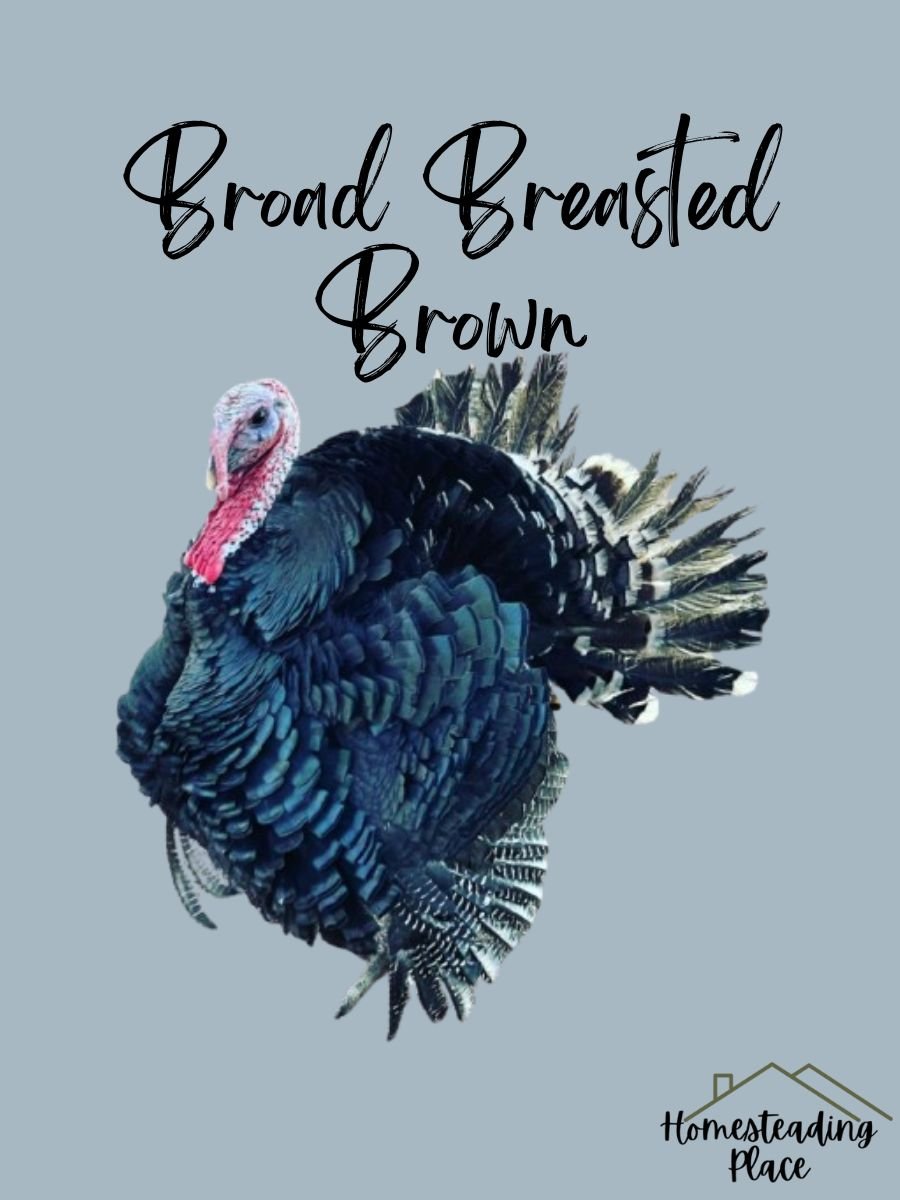
Truly looking like stately lords of barnyard!
Key Characteristics: Dark, flavorful meat, rapid growth
Pros: Medium to large size, robust health
Cons: Less common than Broad Breasted White
Best For: Homesteaders looking for flavorful meat
3. Red Bourbon
Do you know Bourbon Red turkeys grow slowly and mature at around 26 to 28 weeks?
But don’t worry! This striking heritage breed is great for display and flavorful meat.
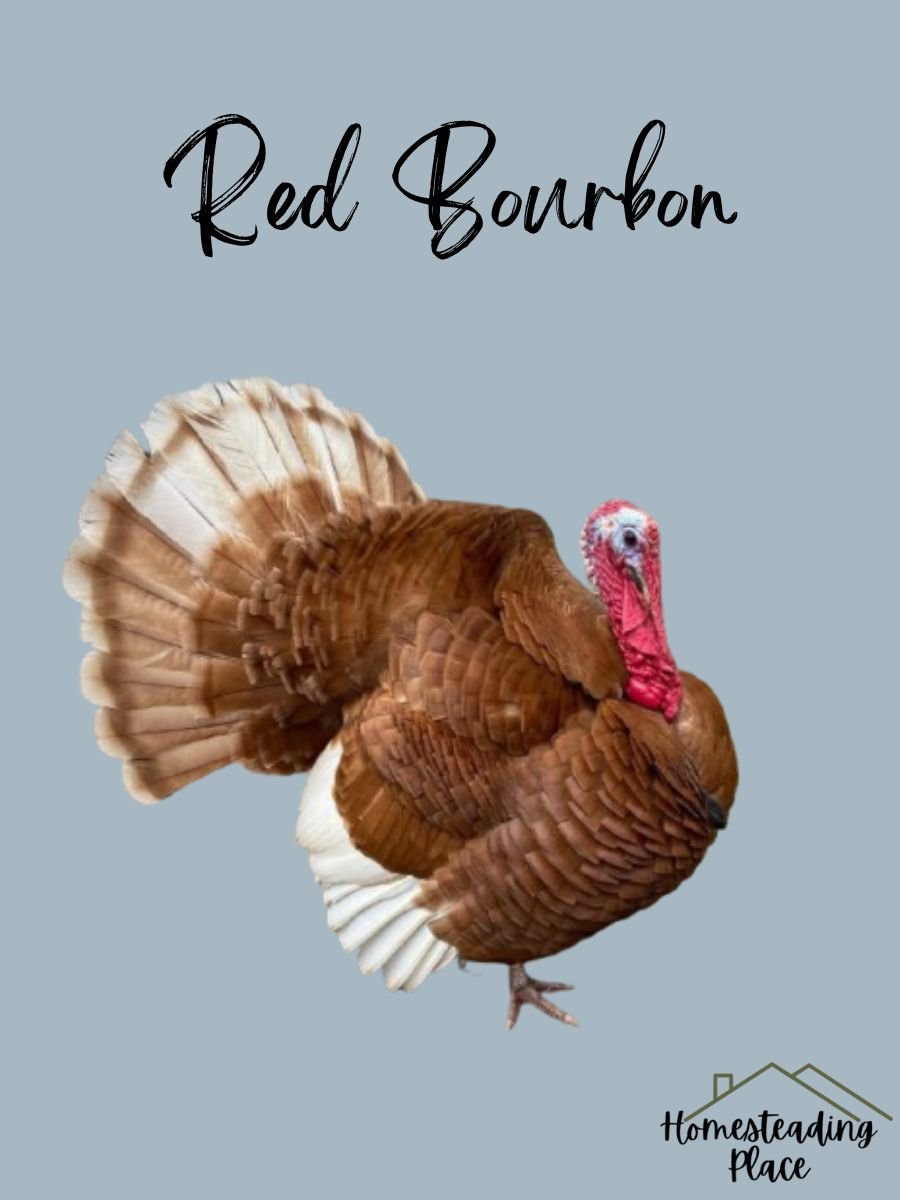
They are tall, high-breasted turkeys with rich, dark chestnut mahogany characterized by a few black and white stripes.
You can tell Red Bourbon with a dark beak and light horn tip. The birds have reddish horn legs that turn pink in the adults.
They weigh around 14–32 pounds.
Key Characteristics: Rich, flavorful meat, slow growth rate, more disease–resistant
Pros: Easy to manage, good foragers
Cons: Smaller size compared to commercial breeds
Best For: Small homesteads and sustainable meat production
4. Narragansett
Narragansett turkeys are a dual-purpose breed with a calm temperament.
The birds have large bodies with plumage in black, gray, tan, and white shades. They also have white wing bars and tan bands in the tail.
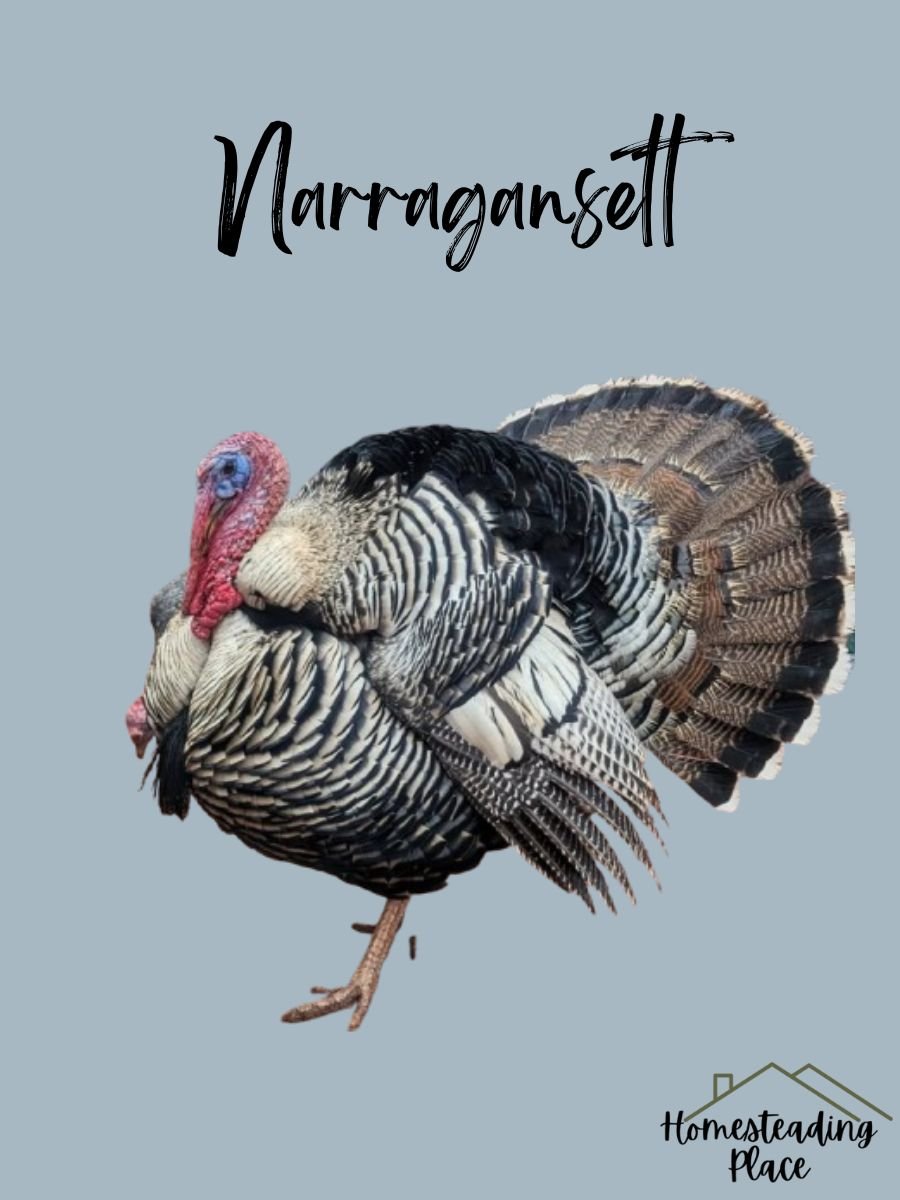
While male juveniles and adults weigh 22 and 28 pounds, juveniles and hens weigh 14 and 16, respectively.
They mature in 28 weeks but can be butchered at 6 months.
Key Features: Tender meat with superior flavor, hardiness, self-sufficiency, excellent mothering skills
Pros: Adaptable to free-range environments
Cons: Slower growth compared to commercial breeds
Best For: Beginners and backyard farms
5. White Holland
This heritage breed has smaller breasts, shorter legs, snow-white plumage, and a red-to-bluish head.
They look attractive with black beards, pink beaks, pinkish-white toes, and shanks. The males grow around 36 pounds and hens 18 pounds.
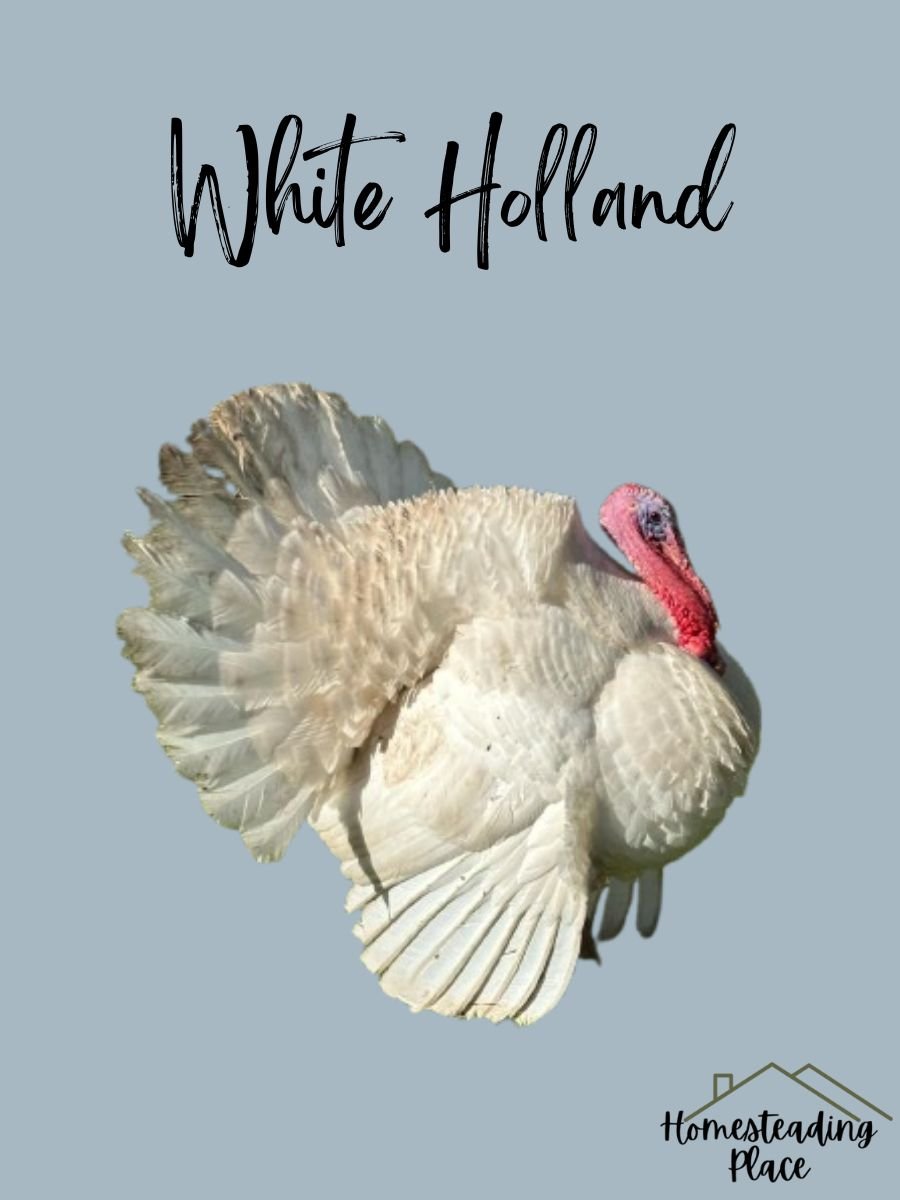
It may disappoint you with maturity age. Though they can be ready to butcher in 24 weeks, they take 9 months to mature fully.
It seems they grow more slowly, like 50% slower than meat turkey breeds.
Key Characteristics: White feathers, tender meat, hot and cold resistant, moderate size
Pros: Attractive and easy to process
Cons: Slower growth rate
Best For: Medium-scale meat production
6. Royal Palm
I don’t think Royal Palm turkeys are bred for growth rate or muscling but used as an ornamental breed.
They look attractive with white and shiny, metallic-black saddle feathers. They have black-tipped white breast plumage, black beard, black back with black-rimmed tails.
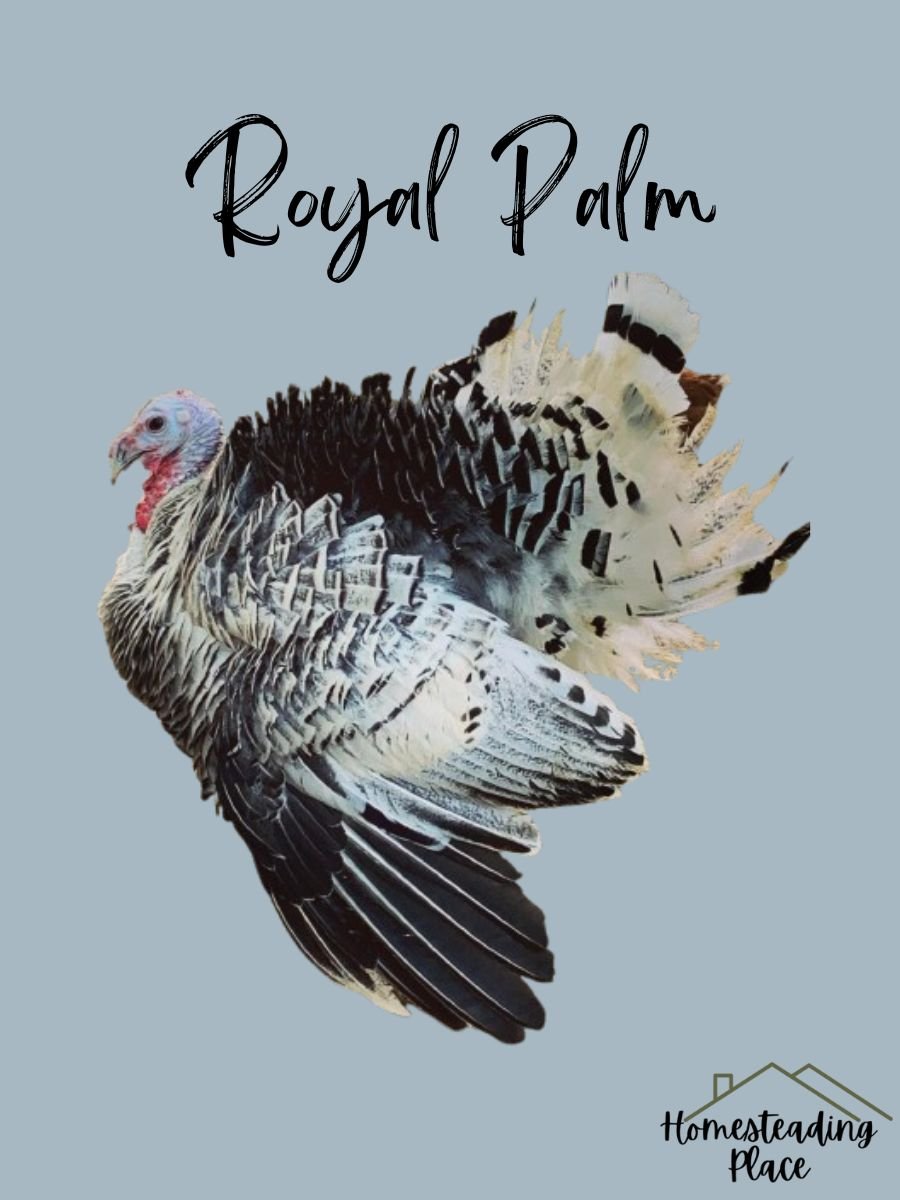
Again, the birds expose red wattles and red or blue heads
While males can get 16-22 pounds, females weigh 10-12 pounds. These poults become ready for the dining table in 28 weeks.
Key Characteristics: Delicate meat, striking appearance
Pros: Hardy, excellent flyers, good foragers
Cons: Smaller size and yield
Best For: Homesteaders prioritizing aesthetics and small meat yields
7. Midget White
We had 3 toms around 13 pounds, and the hens were only 9. They look like meat chicken breeds or a bit bigger than chickens.
Midget white can weigh 10- 20 pounds, making it the smallest breed.
They are known for their white plumage and small stature. Also, they resemble the miniature version of Broad Breasted White turkeys.
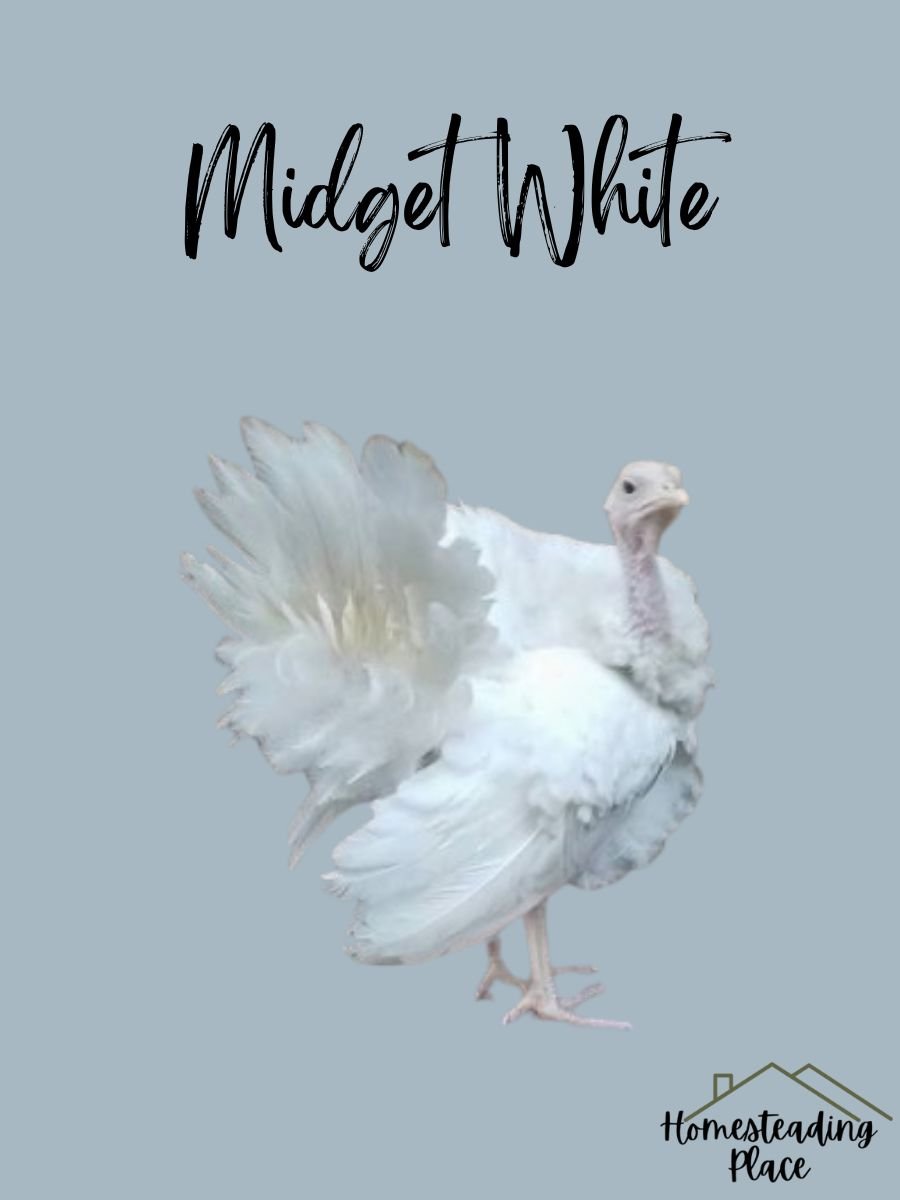
The good thing is that the white turkeys mature in about 20 weeks.
Key Characteristics: Tender, juicy meat, higher egg yield, fertile, hatchability
Pros: Easy to raise, suitable for smaller spaces
Cons: Lower yield compared to larger breeds
Best For: Farms or houses with limited space
8. Standard Bronze
This heritage breed is known for its copper or bronze-colored metallic sheen, and excellent meat.
Standard Bronze turkeys are ready for slaughter in 28 weeks and take 36 weeks to mature.
They weigh 35–38 pounds for a tom and 18–22 pounds for a hen.
You can tell Standard Bronze with dark-brown plumage with a shiny metallic sheen. This gives a bronze appearance with the touch of a black band.
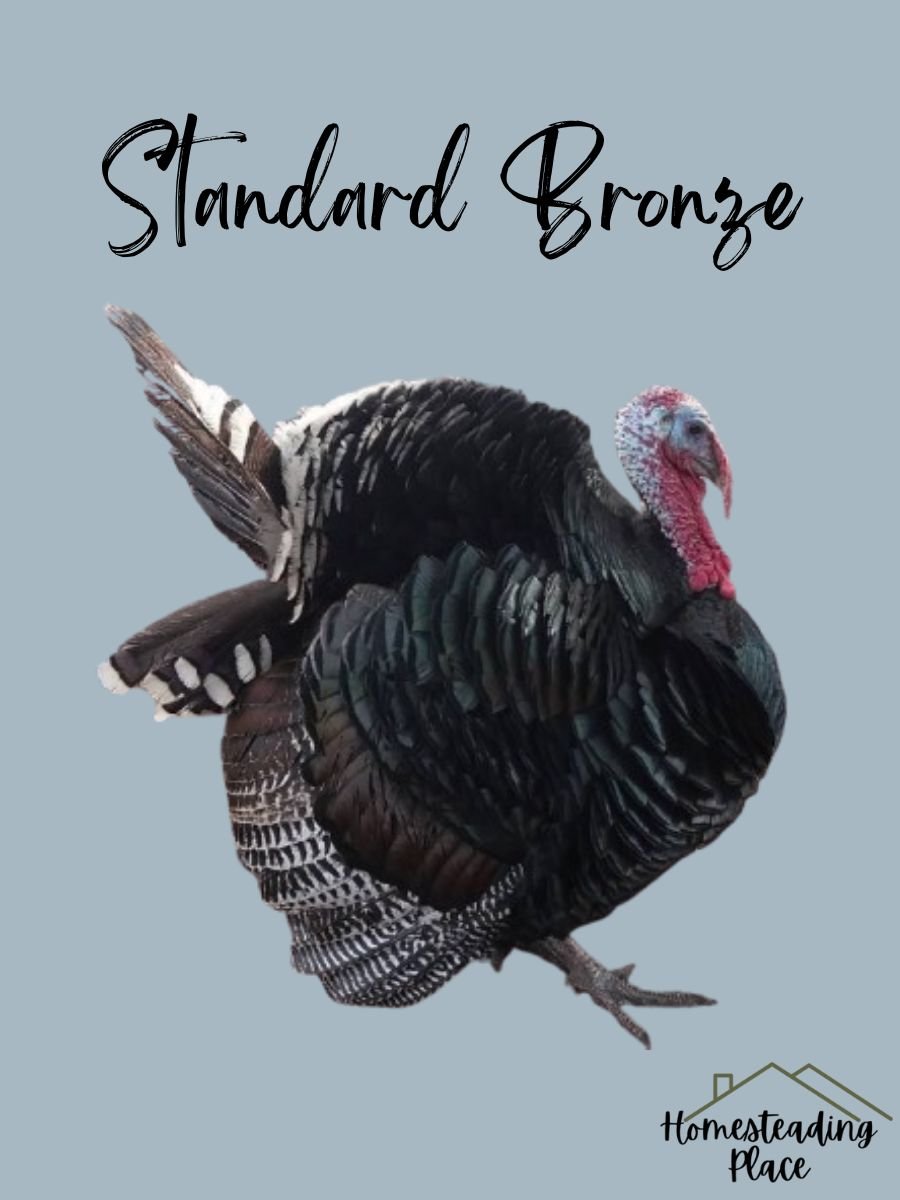
Key Characteristics: Rich flavor, large size
Pros: Active foragers, robust health
Cons: Slower growth
Best For: Sustainable, pasture-based systems
9. Slate Turkey
Don’t be confused with Slate or Blue Slate; they are all alike.
Slate turkeys have a solid to ashy blue hue over their whole body, making bluish-gray feathers. They also have some black flecks and beards and red to bluish-white heads, wattles, and throats.
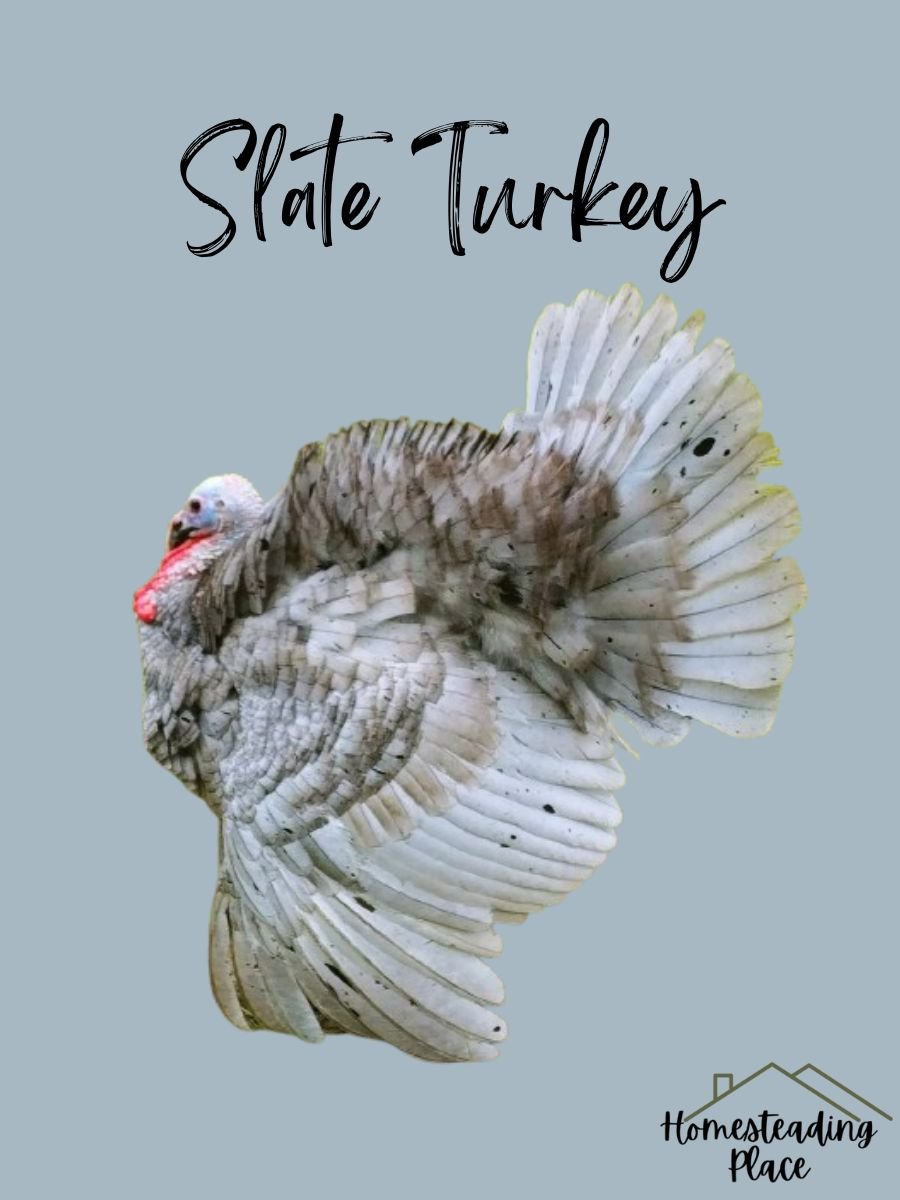
These rare birds are medium-sized turkeys weighing from 14 to 33 pounds.
They have a slow to moderate rate and mature in 28 weeks.
Key Characteristics: Lean, firm, moist, and flavorful meat, docile temperament
Pros: Hardy, good in diverse climates
Cons: Smaller market size
Best For: Specialty and niche markets
10. Black Spanish
Another confusion! Black turkey, Black Spanish turkey, or Norfolk Black turkey are all one breed.
Black Spanish turkeys are slightly smaller than the Bronze ones. They weigh 23-33 pounds for tom and 14-18 pounds for hen.
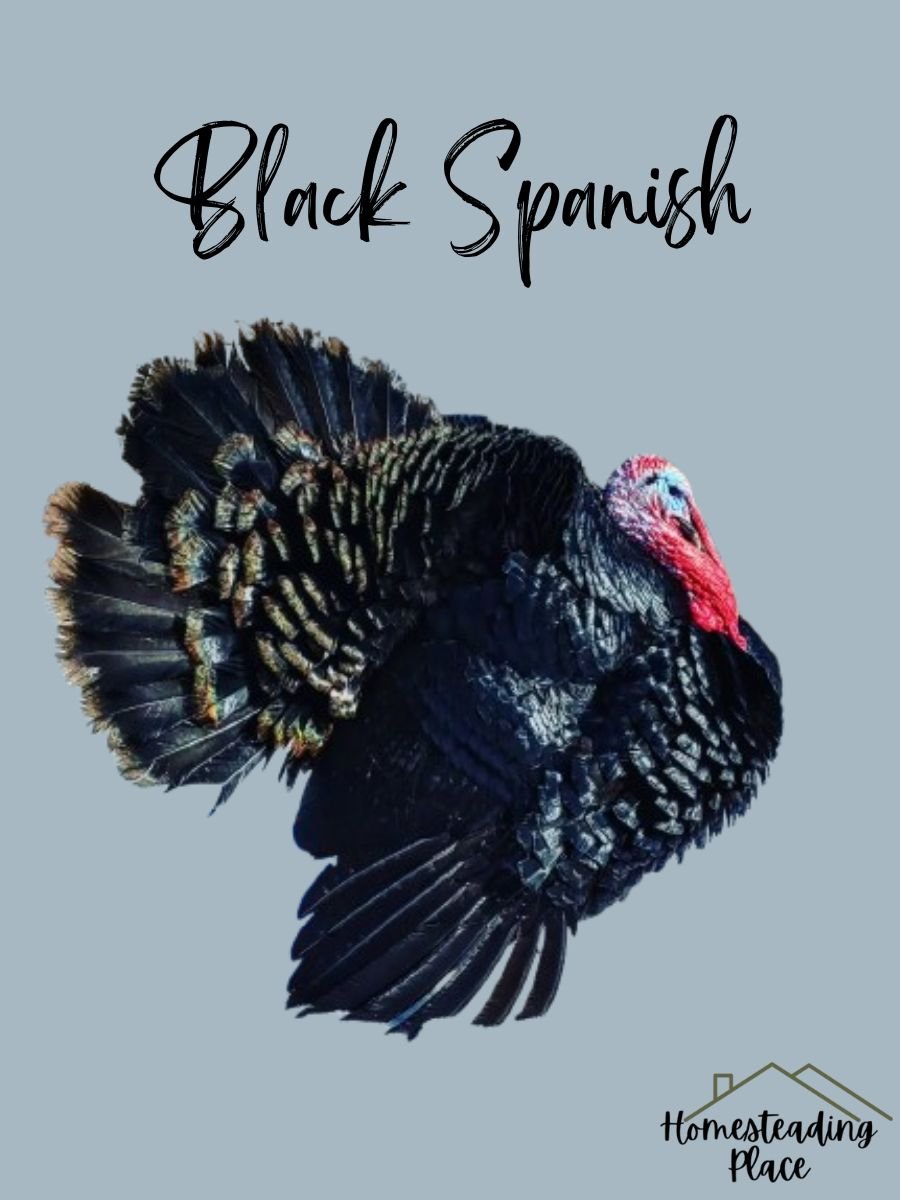
It is a heritage breed with dark feathers and a green sheen. The wattle looks red, but it can change to bluish-white.
You can also identify them with their pink shanks and toes.
Though the domestic birds mature in 9 months, you can process them in 28 weeks.
Key Characteristics: Juicy, flavorful meat, medium size, friendly and cold-hardy
Pros: Hardy and disease-resistant
Cons: Lower availability
Best For: Small-scale, quality-focused meat production
11. Beltsville Small White
This heritage breed is a small, compact bird with a broad breast and short neck and legs.
Beltsville Small White turkeys have a milky white plumage with a red to bluish white head. They are also known for their solid black beards, horn color beaks, and pinkish-white shanks.
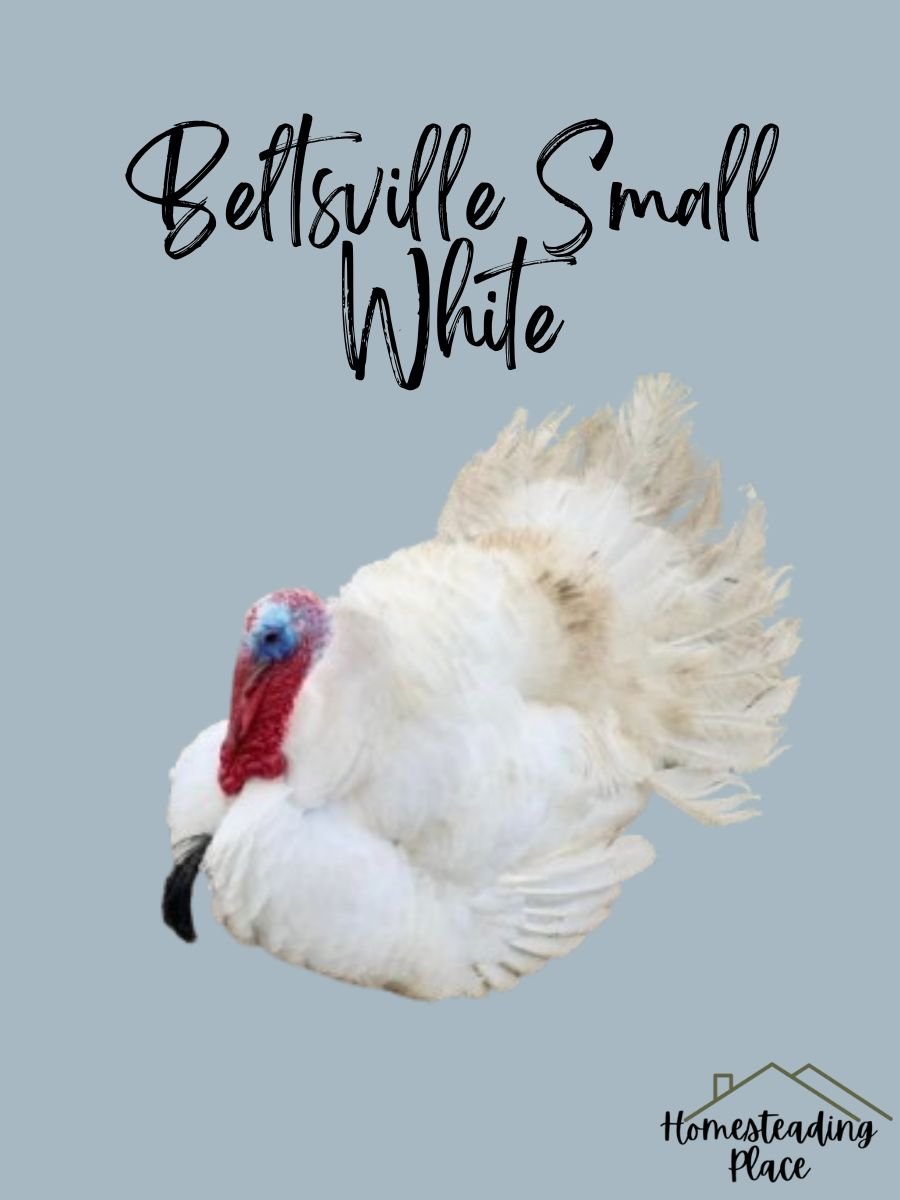
These birds weigh between 17 and 21 pounds for toms, and hens grow up to 17 pounds.
They take 24 to 26 weeks to get a good weight.
Key Characteristics: Small size, tender meat
Pros: Great for small families and limited space
Cons: Lower meat yield
Best For: Urban homesteads
12. Chocolate Turkey
Chocolate turkeys grow around 33 pounds for a tom and 18 for a hen.
They are a rare heritage breed with brown plumage, shanks, and legs. These three parts look solid milk chocolate colored when the turkeys mature.
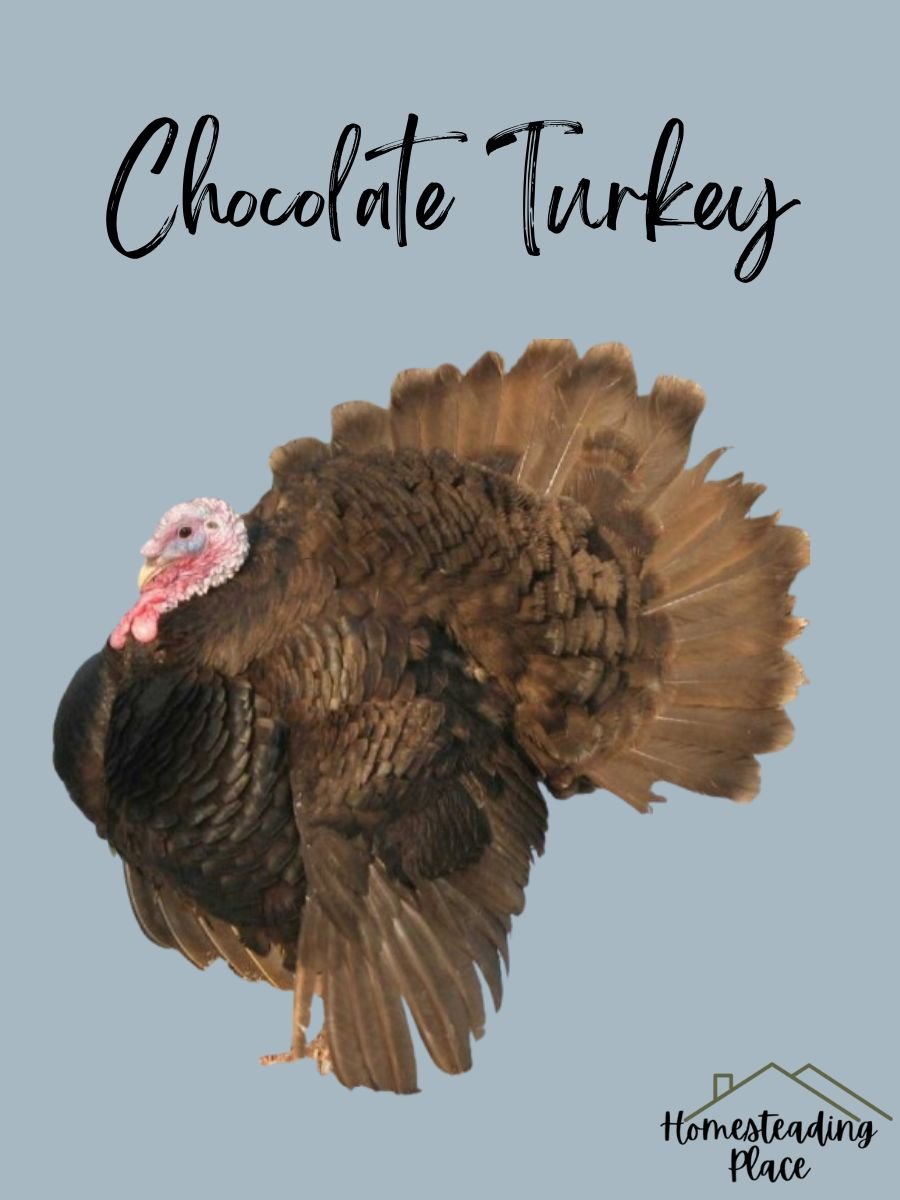
Their maturing age is around 34-36 weeks. They are the biggest heritage turkeys.
Key Features: Medium-to-large size, rich-flavored meat, and striking appearance
Pros: Hardy in diverse climates, excellent foragers, unique visual appeal
Cons: Limited availability, slower growth rate
Best For: People looking for flavorful meat breed with a unique aesthetic
13. Auburn Turkey
This rare heritage breed is known for its reddish-brown plumage and dual-purpose qualities for meat and eggs.
Auburn turkeys have bronze plumage with black stripes, and features later turn red-brown.
Anyway, they weigh between 19 and 35 pounds.
The birds mature early and are for dual purposes. They don’t go far from home when permitted to range.
Key Characteristics: Medium size, rich-flavored meat, hardy in diverse environments
Pros: Excellent foragers, disease-resistant, visually striking
Cons: Niche market, slower growth rate
Best For: Small-scale farms and sustainable meat production
14. Jersey Buff
If you want something unique new about turkeys, you may need a Jersey Buff breed that weighs around 21 pounds for toms and 12 pounds for hens.
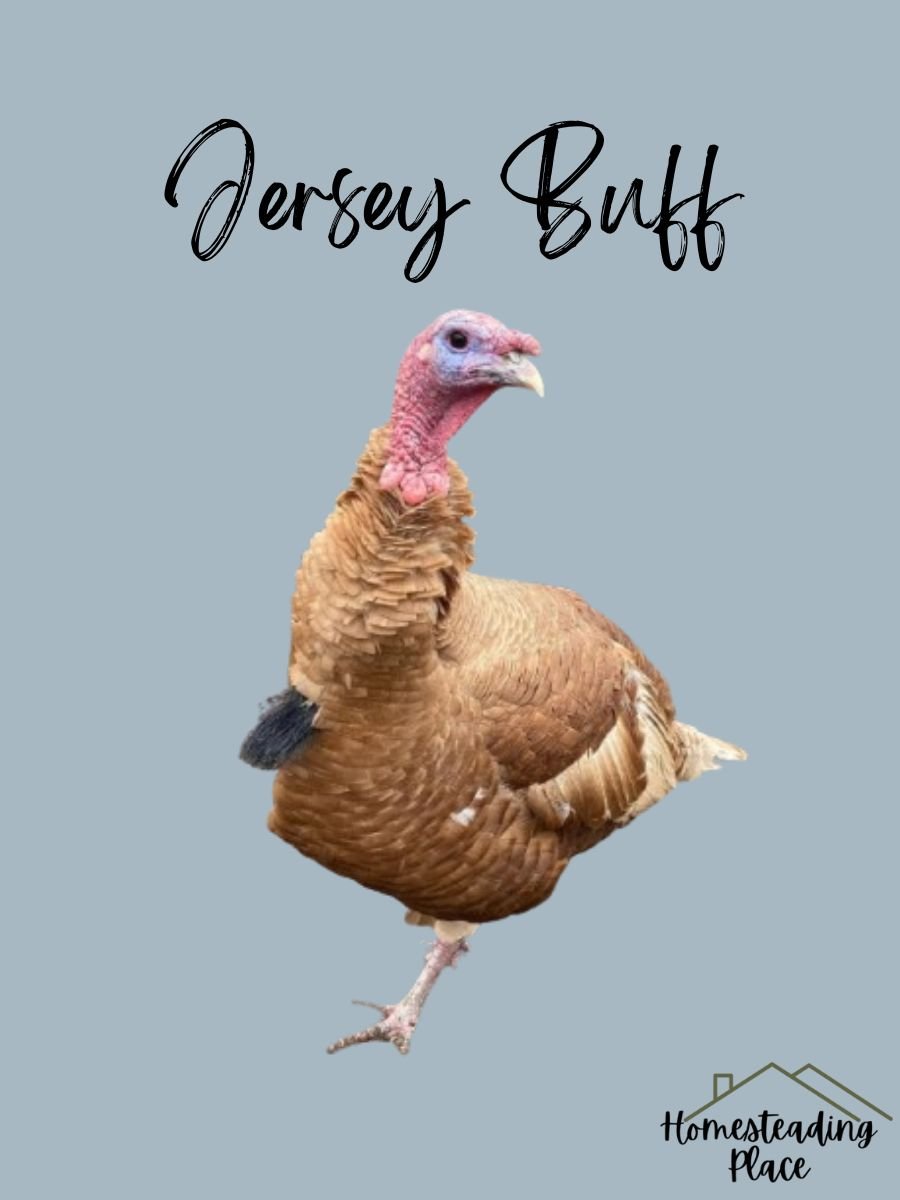
They are rare heritage breed turkeys with very light or rich reddish-buff colored plumage.
You can tell Red Bourbon with a white tail and wings and a buff band hue across the tail feathers.
Key Characteristics: Mild, tender meat, medium size
Pros: Friendly temperament, easy to raise
Cons: Limited availability
Best For: Specialty and backyard farms
15. Orlopp Bronze
It is a modern breed with excellent meat yield and high meat quality.
Orlopp Bronze turkeys are also known for excellent conformation, natural fat layering, and attractive feathering.
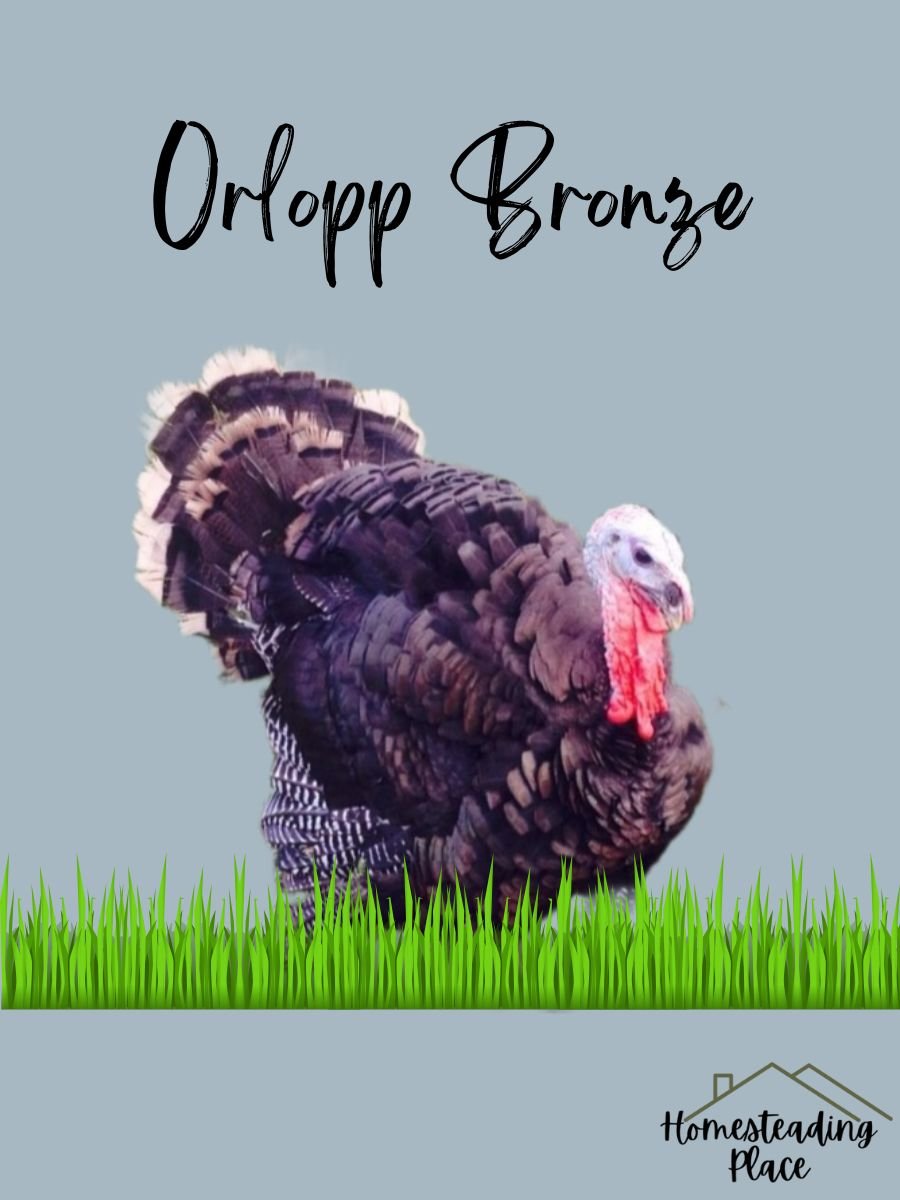
These broad-breasted turkeys grow around 23–40 pounds and mature in 20 weeks.
So, fast-growing meat turkey breeds can be processed from 4 to 6 months of age.
Key Characteristics: Robust size, tender meat
Pros: Commercial viability and heritage appeal
Cons: Requires specific care for best results
Best For: Meat-focused homesteaders
Final Thoughts
While choosing the right meat turkey breeds for your home and farm, you must analyze the meat quality.
I personally feel that heritage breeds are superior in meat flavor. I can tell you that meat quality depends on the feeding birds.
Heritage turkeys, which are good foragers in the free range, have lots of food sources compared to confined ones.



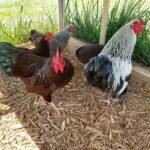
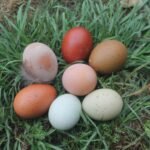

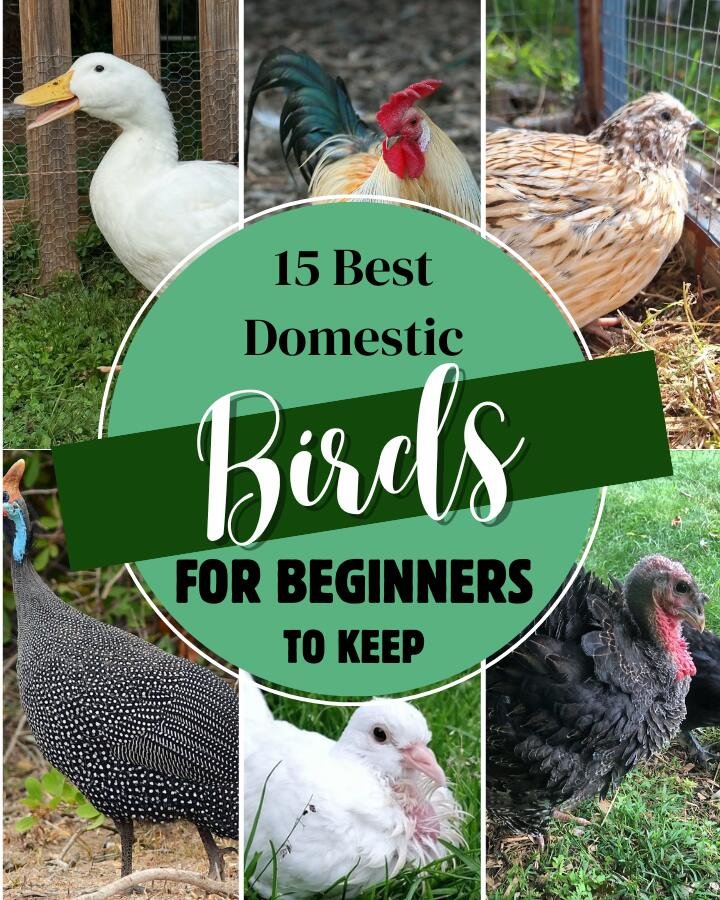
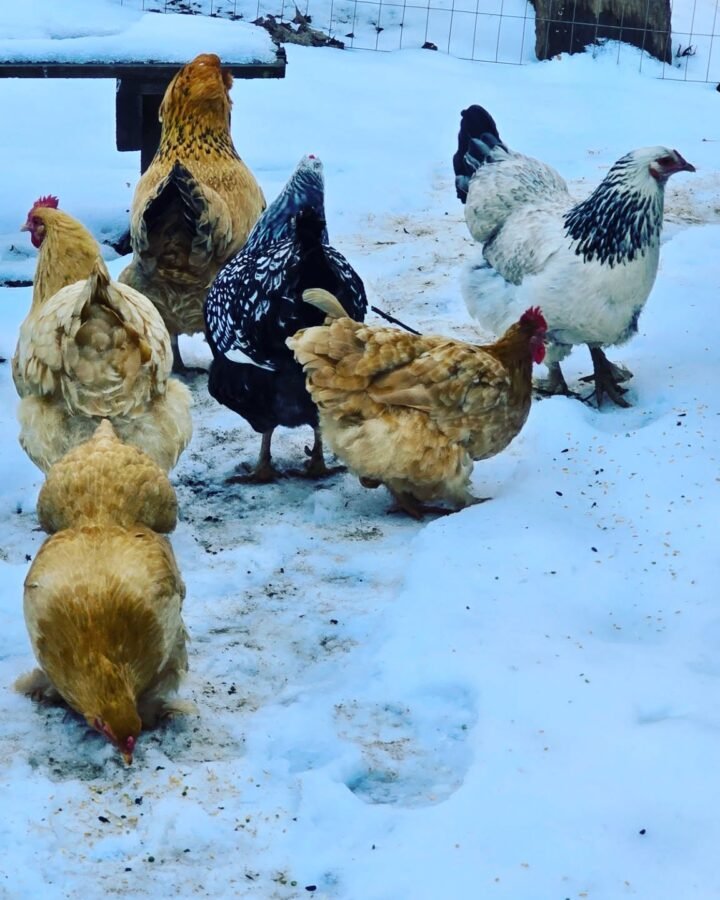

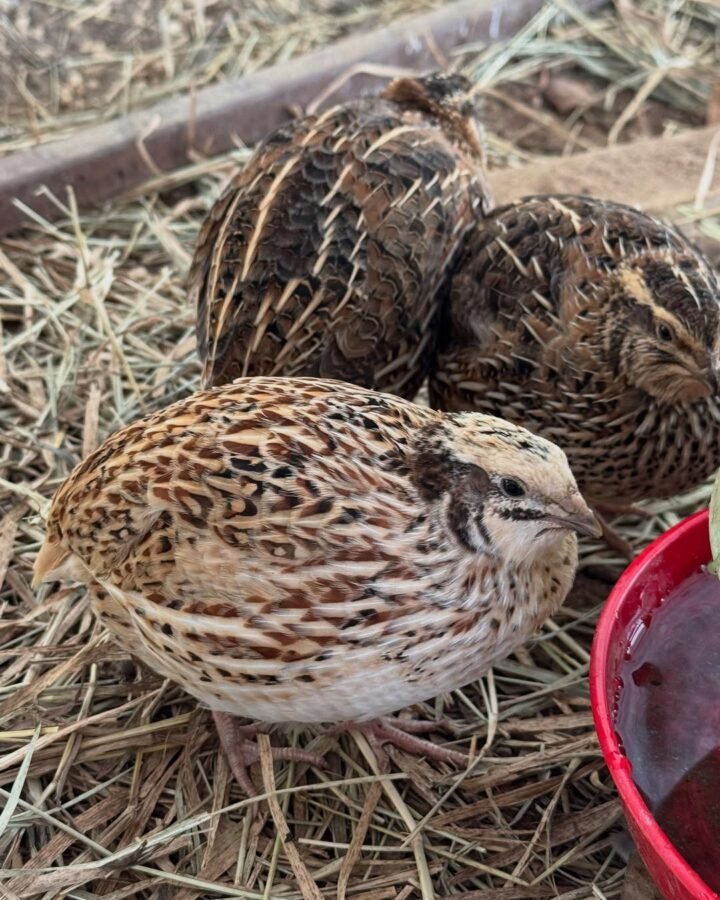
Leave a Reply